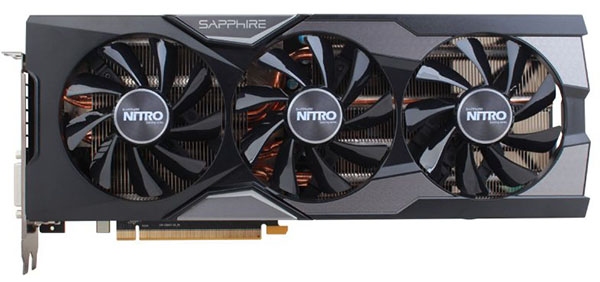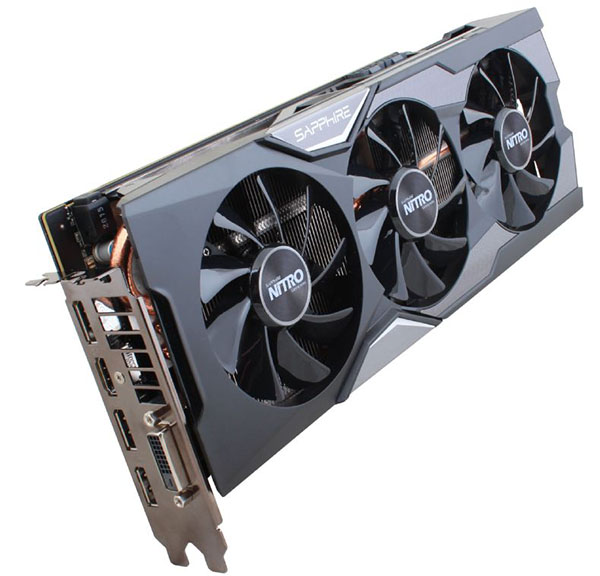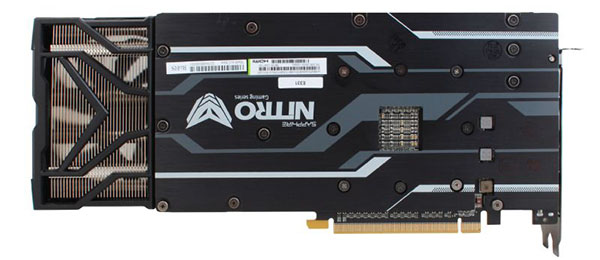Introduction
Pregnant with the promise of next-generation graphics technology debuting sooner rather than later, 2016 is an interesting year for both graphics-card manufacturers and consumers. Do you hold off an upgrade in the hope that Polaris and Pascal arrive to market soon, or is it better to take the plunge now knowing that launching new architectures and a new manufacturing process at the same time is likely to push the time-to-market out by a few more months? Decisions, decisions.
If you're in the camp that just can't wait for what's around the silicon corner, there's nothing really wrong with going for a high-end card right now. These present-day Radeons and GeForces are very much a known quantity, so before the sun sets on the Fiji architecture, Sapphire, AMD's biggest board partner, is rolling another derivative into the ever-expanding Nitro family.

Why would Sapphire feel the need to augment the range when there's a competent Tri-X OC model already reviewed? Well, a couple of reasons. Firstly, that particular OC variant of the card no longer exists in Sapphire's catalogue; instead, buyers have to make do with a standard-clocked version that runs at a reference 1,000MHz core and 500MHz HBM memory. The second is that, seven months on from the Tri-X, Sapphire reckons its time to ditch the hither-to-used AMD reference PCB and go for a completely custom design.
This isn't the fastest Fury implementation; that honour goes to the 4,096-core Fury X. Fury regular, if we can call it that, chops this down to 3,584 cores, or enough to ensure there's decent performance differentiation between the two if running at identical frequencies. Fury X, only available in watercooled form, is 20 per cent more expensive.
Back on track, the three-fan cooler is familiar because it is the same as used on the Tri-X, albeit with a slightly different colour scheme that, subjectively, doesn't look as sharp. Under the auspice of Intelligent Fan Control II, the trio of spinners switch off at idle and low load, and unlike some solutions, there's no on/off oscillation when the card is sat in a PC doing nothing more than rendering a 2D screen.

The use of a custom PCB makes the Nitro 7mm longer (307mm), 15mm taller (125mm) and 5mm thicker (45mm). Notice how the cooler is taller than the standard-sized I/O bracket? It effectively blocks off three slots so bear this in mind if thinking about CrossFire, and do remember to screw it in properly otherwise it will bow and cause the PCIe slot to bend.
The extra size enables Sapphire to increase the core clock to 1,050MHz, up from the default 1,000MHz on the Fury Pro GPU. Not huge in the grand scheme of things, but chip-maker AMD is running close to the wind with the native frequency anyway - you're not going to see air-cooled Furys at an out-of-the-box 1,150MHz, for example. It's a shame that the 4GB of first-generation HBM memory is left at a base 500MHz, though.

Sapphire says the extra core speed is managed by way of a custom eight-layer PCB design that houses a six-phase circuit where the VRMs can offer up to 360A of current without burning. What this really means is that the GPU can run at 1.3V, and high core frequencies should be well within the remit of power regulation, though bear in mind the level of amperage supported is in direct relationship to the operating temperature. This is why we're pleased to see the VRMs cooled by heatsinks and receiving airflow from the three fans. Truth to told, such a huge card goes against the grain of HBM memory, which hardly takes up any space, but Sapphire needs the PCB real estate for the gargantuan cooler.
Power is sourced through two eight-pin connectors on the far side, offering up to 375W of power. It's useful to know this because the PCB features a dual-BIOS switch. In position one, the default state, power is limited to 260W and temperature is regulated to 75°C. The second position increases the target temperature to 80°C and power limit to 300W. Coil whine has become more of an issue as so much power is shunted through a card. Sapphire answers this by using its Black Diamond chokes, so we'll see how successful it has been in reducing the dreaded whine.
Outputs are also different on this model, increased from four to five, and comprising of dual-link DVI, a trio of DisplayPort 1.2 and HDMI 1.4a. Followers of graphics cards will know that DisplayPort is the only means of achieving a 4K60 resolution.

Finishing it off, the rear of the card features a decent-sized backplate for extra rigidity. The huge overhang is a consequence of moving the cooler more to the left than usual, but to Sapphire's credit, the frame surrounding the aluminium fins is rigid and doesn't cause the cooler to bend.
These upgrades push the price of the Nitro Fury up to £430. Such a sum puts it in the crosshairs of a decent GeForce GTX 980 and substantially below the price of a GeForce GTX 980 Ti. More pertinently, the recent price drop on the Fury Nano, which is now the same money, also puts it into the frame, as are the odd watercooled Fury X cards. And if you're quick, you can get Star Wars Battlefront as a redeemable code, softening the purchase blow.









